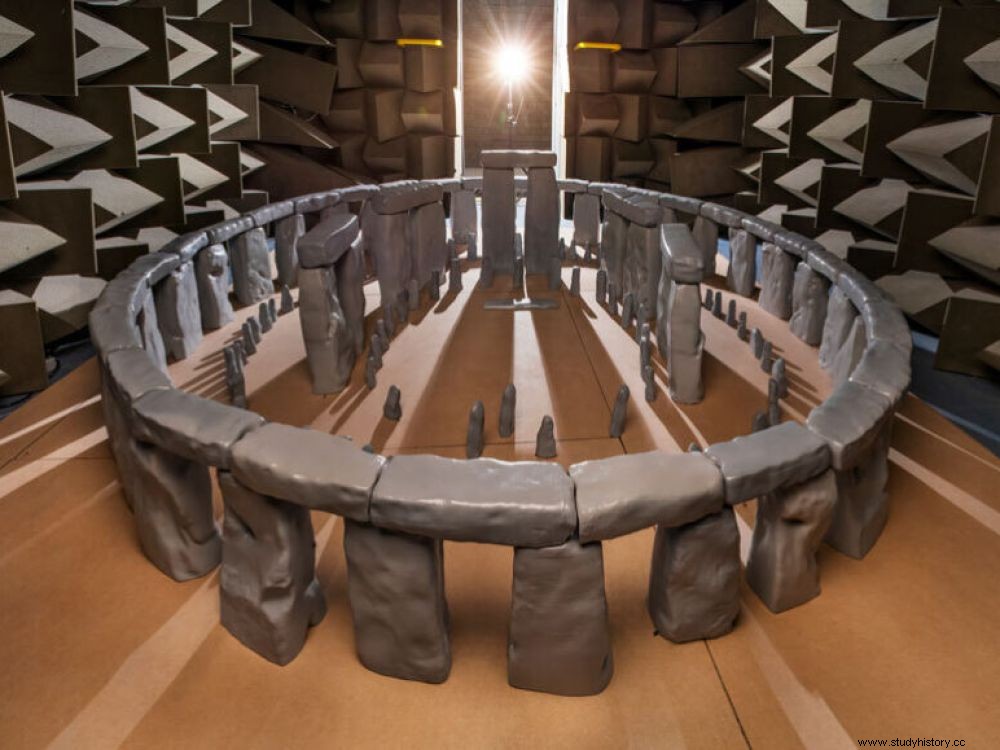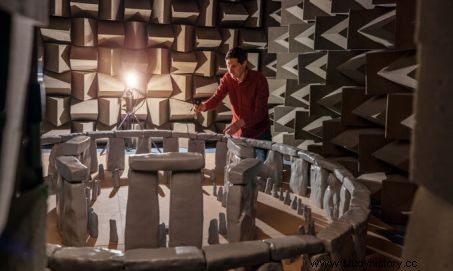By reproducing the prehistoric site of Stonehenge in the form of a model, British researchers have discovered that the monument, when it was still complete, had astonishing acoustic faculties:the human voices or the musical notes which were pronounced or played there were not only amplified inside, but inaudible to anyone outside.

To understand how sounds reverberated through the monument when it was still complete, the team of researchers from Salford developed a model of the site.
When we think of Stonehenge, we all visualize this lacunar and irregular double circle of stones which is believed to have been, between the Neolithic and the Bronze Age, one of the main prehistoric sanctuaries of Great Britain. In a second step, you have to use your imagination to visualize it in its original state, in other words completely closed at the level of its outer circle.
Acousticians Trevor Cox and Bruno Fazenda of the University of Salford, assisted by archaeologist Susan Greaney, did more than imagine it:they made a 1:12 scale model. Called "Minihenge", this reproduction of the famous monument on Salisbury Plain was to allow them to test the acoustic properties of the building when its 157 stones were all still standing. In an article published in the October edition of the Journal of Archaeological Science , the three researchers describe their methodology and their surprising findings.
Stonehenge formed an acoustic space that amplified voices and enhanced the sound of any music played
About 4,000 years ago, Stonehenge formed an acoustic space that amplified voices and enhanced the sound of any music played for people standing within the massive circle of stones. Due to the way the stones were placed, this word or music would not have been projected beyond the monument's enclosure, into the surrounding nature, and would have been barely distinguishable by people standing nearby. .

Acoustician Trevor Cox in front of the 1/12th scale model of Stonehenge, the largest that can still fit into the acoustic study chamber. Credits:Acoustics Research Center/Univ. of Salford
The researchers found that the decay time to 60 decibels was 0.6 seconds inside the monument, but not outside. Such a degree of reverberation would have enhanced verbal communication and music within the monument in a manner quite similar to the effects of reverb used in modern music pieces. However, there would have been no echo, again thanks to the particular arrangement of the stones.
3D printing
To recreate the monument with precision, data obtained by laser scanning during previous work allowed them to rely on 3D printing. In the same way, to recreate from scratch the missing stones, previous works were consulted. All simulated stones have been treated to replicate the acoustic properties of light gray sandstone and bluestone. Finally, speakers and microphones were installed in and around their models. The tests consisted of playing chirping noises in the full range of very low and very high frequencies. Microphone data was recorded and then analyzed.
The study specifies that Stonehenge was not built solely for its acoustic properties, but indeed for ritual purposes, and more precisely funerary. Its acoustic properties would thus be only one of the characteristics linked to the function of the place.
